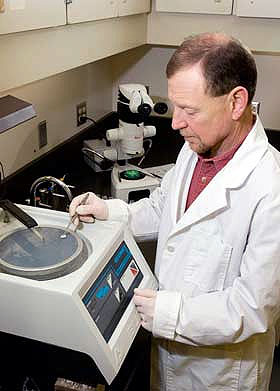 January 04, 2008
"We have successfully used traces of C-14 to confirm the ages of Pacific Ocean perch from the Gulf of Alaska " said Doug DeMaster, Director of the Alaska Fisheries Science Center. "It turns out that C-14 is one of the best ways we have of confirming the age of fish-important information for fishery stock assessment and management. We plan to use this method on a number of different species." During the height of the Cold War in the late 1950's to early '70's, the United States, Russia, and other countries exploded enough above-ground nuclear bombs to raise the amount of C-14 in the atmosphere and in the surface layers of the ocean. C-14 has a half-life of 5,730 years, so after the increase due to the bombs, it has been decaying slowly in the environment, giving scientists a benchmark (or expected value) for each year. Fish ear bones, called otoliths, grow in 'rings' similar to annual growth rings found in trees. Researchers know the year that the fish was collected, and can count growth rings back to estimate the age of the fish. If the amount of C-14 detected in the first growth ring of the otolith matches up with the expected environmental amount in that year, then the estimated age of the fish is correct. "For Pacific Ocean perch otoliths we must physically extract the otolith center-the first year--which measures only about 3 by 2 by 5 millimeters," said Dan Kimura, a NOAA fisheries researcher at the Alaska Fisheries Science Center. "That is difficult." The otolith centers are then sent to The National Ocean Sciences Accelerator Mass Spectrometry Facility, at the Woods Hole Oceanographic Institution, where other scientists measure the amount of C-14. Thirty-five fish were included in the 2007 Pacific Ocean perch study, which confirmed fish ages from 18 to 47 years. "The importance of the radiocarbon method of fish age confirmation is that it is very precise and is applicable to many fish species," Kimura said. "We typically have 10 or more scientists aging fish by analyzing growth rings in more than 30,000 specimens from around 20 species annually." "For fisheries labs which have the required stores of otoliths from fish that were born in the critical late 1950's to early '70's era, bomb radiocarbon age confirmation is very attractive," Kimura said. "At the Alaska Fisheries Science Center, we have archived otolith samples from well over a 1,000,000 specimens."
Source of News:
Publish A Letter in SitNews Read Letters/Opinions
|
||
